ASRock Rack C2750D4I Review: A Storage Motherboard with Management
by Ian Cutress on April 29, 2014 9:00 AM EST- Posted in
- Motherboards
- Storage
- Atom
- ASRock
- Silvermont
- Enterprise
- server
- Avoton
Silverstone was clearly monitoring the forums with regards to the C2750D4I in order to come out with a case designed amound the concept. Our Silverstone contact also became aware that we had the motherboard in for testing and volunteered its DS380 for a quick overview. I installed the motherboard in to the case along with my rag-tag collection of storage drives (four 3TB Seagate Barracuda 7200.14, one 2TB Western Digital Green and one 1.5 TB Seagate Barracuda 7200.11) which were previously spread out across several systems.
The case has a top mounted power-supply section (we used the Silverstone 300W SFF PSU) and places the C2750D4I upside down, with space for an 11” dual slot GPU. For PSUs that have a top/bottom mounted fan, Silverstone’s design means that the airflow for it is out of the case.
The rear of the case has a single 120mm fan installed, and the side of the case (for blowing onto the drives) uses two 120mm fans – all three were included in our retail sample. The fans use a dimpled design to reduce fan noise.
The drive area uses a backplane, and SATA cables from the motherboard attach to this. Users can install SAS drives using both SATA ports.
The case is designed for hot-swap systems, and as such the front eight bays allow the drives to be removed.
The front of the case has two USB ports, with the connector inside capable of being placed in a USB 3.0 header. This is where the case differs in being ideal for the C2750, as there are no USB 3.0 headers on board. Had Silverstone offered this connector as a USB 3.0/USB 2.0 hybrid, this would have been more ideal. There are two audio jacks as well should a user decide to place a different mini-ITX motherboard in the case and can take advantage of eight drive bays via an expansion card.
The front of the case is also lockable, although the key design is not a unique one. It does stop little ones pulling a drive out however.
The case is not a tool-less design, but a standard screwdriver is all I needed to put the system together. Because the C2750D4I has a small heatsink, cable management was easy enough, although the placement of the 24-pin ATX power connector meant that the cable had to go all the way across the motherboard. At the top we also have the 4 bays for 2.5” drives:
Silverstone suggested the 300W PSU that we used for the build, but if a PCIe device was installed we would have had to have used a 24-pin extension cable. Similarly, the SATA cables suggested had a small issue on the bottom SATA port:
Using my own ears (unfortunately I am not equipped to measure audio performance), the three fans installed, when active, were audible enough to disturb quiet scenes in a movie and you might not want it nearby overnight, but certainly silent compared to my normal PC or the busy road I live next to. Temperature readings from the CPU gave 40ºC at idle and 53ºC at load. Total power draw, at the wall with my drives installed using the 300W PSU on a 240V line was 52 W at idle.
Ganesh also has this motherboard in to test and will be examining the storage performance in due course.
| Silverstone DS380 | |
| Price | Link |
| Model Name | SST-DS380B |
| Material | Aluminium door, SECC body |
| Motherboard Size | Mini-ITX, DTX |
| Drive Bays |
8 x 3.5"/2.5" Hot Swappable 4 x 2.5" |
| Cooling |
1 x Rear 120mm 1200 RPM 22 dBA 2 x Side 120mm 1200 RPM 22 dBA |
| Expansion Slots | 2 |
| Front IO |
2 x USB 3.0 1 x Headphone 1 x Microphone |
| PSU | SFX |
| Expansion Card | 11" x 4.38" |
| CPU Cooler | 57 mm |
| Dimensions |
211 mm x 285 mm x 360 mm 21.6 liters |
| Warranty Period | 1 Year |
| Product Page | Link |




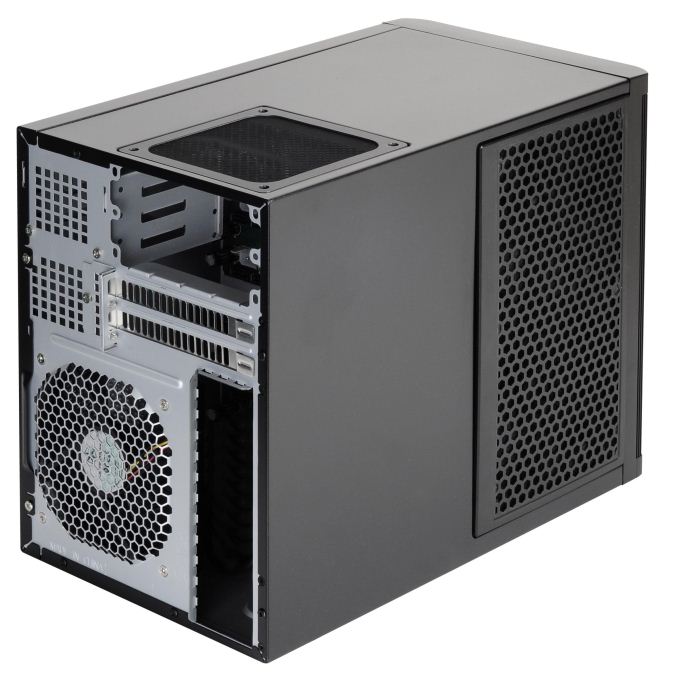
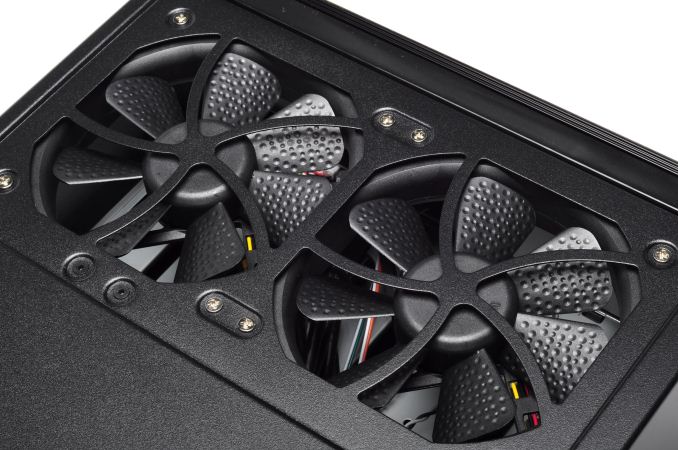


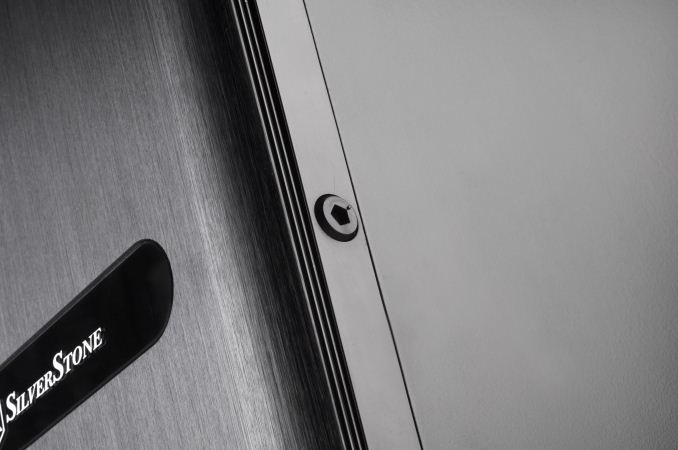
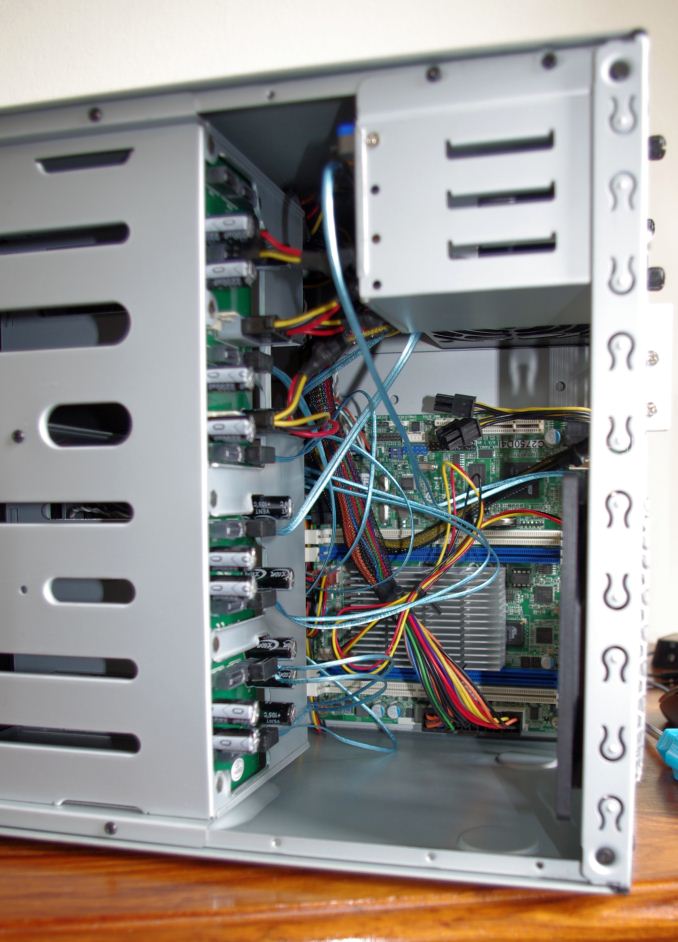
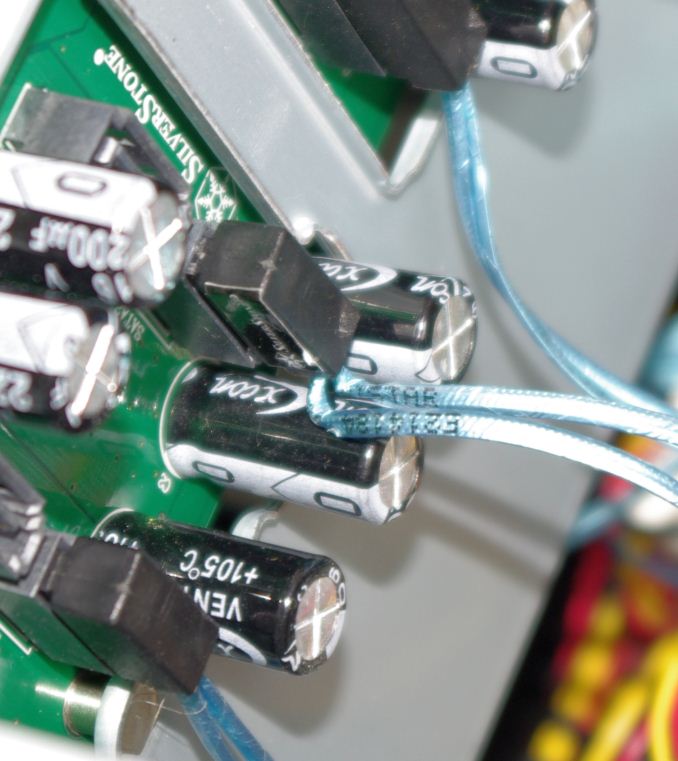














85 Comments
View All Comments
Marquis - Tuesday, April 29, 2014 - link
Nevermind, reading comprehension FTW. The other two are mentioned later....bombshelter - Tuesday, April 29, 2014 - link
Your comment about the reason for using the PLX switch is wrong. First, the PEX8608 is an 8-lane switch and they are using it in a x4 (from CPU) to 4 x1s (to PCIe end-points) topology. The Avoton CPU actually has a total of 16 PCIe lanes, but can only bifurcate to 4 controllers. So the real reason they are using the PLX switch is to be able to have more than 4 PCIe end-points connected to the CPU. There will be no performance degradation or sharing of bandwidth due to the presence of the PLX switch since there is an equal number of lanes going into it from the CPU as as there are end-points connected on the downstream side.Ian Cutress - Tuesday, April 29, 2014 - link
Aha, yes my interpretation of the chipset diagram was a little off. Going to update the review.chang3d - Tuesday, April 29, 2014 - link
Supermicro has two similar board with a few differences of SO-DIMM, USB 3, 4 NICs, and 6 sata headers. It's also cheaper. I think the features of this board is much better than this ASRock board.http://www.newegg.com/Product/Product.aspx?Item=N8...
ddriver - Tuesday, April 29, 2014 - link
Is it just me or was this review an extremely bad match to that product? What about NAS performance, which undoubtedly will be one of the major selling points? Instead we get gaming on a product as far from gaming as it gets. And content creation?Ian Cutress - Tuesday, April 29, 2014 - link
According to users on several forums, this board has been the focus of many different types of build. I've done a brief analysis here of usability and interface, but Ganesh is our storage guru and has all the equipment for storage related tests, so I'd rather leave that in his court for a follow-up review rather than fumble through them myself.ddriver - Wednesday, April 30, 2014 - link
No offense, but you have reviewed a rake as a back scratcher :)With such massive storage capacity, dual gigabit onboard, up to 64 GB of ECC ram - computational performance is irrelevant, this product is all about throughput. While it may be viewed as somewhat beneficial to get concrete numbers, yet after all the numbers only confirm this product ain't neither about gaming nor about content creation, so if anything the review is useful at proving its uselessness, which makes it technically useful - which is quite a nice paradox ;)
LastQuark - Monday, May 5, 2014 - link
It's not you. This is perfect to me for what this board is intended for - virtualization, NAS, home web server, backup, even good enough for a Plex or XMBC server. The review made it seem like it is for HTPC and gaming which it is not.DuckieHo - Tuesday, April 29, 2014 - link
Drop the AST2300 for management.Drop BMC/SMB.
Drop IPMB.
Drop TPM.
Drop COM port.
Reduce fan ports (6 PWM to 4 PWM).
Drop a SATA controller (12 ports to 8 or 10).
Increase the size of the heatsink and/or add a fan.
Drop the price in half for a consumer version please!
Rick83 - Tuesday, April 29, 2014 - link
There's a quad-core version of the same board at 3/4 the price. That should be enough for most home users. It's also a 14W part, so has less cooling needs.